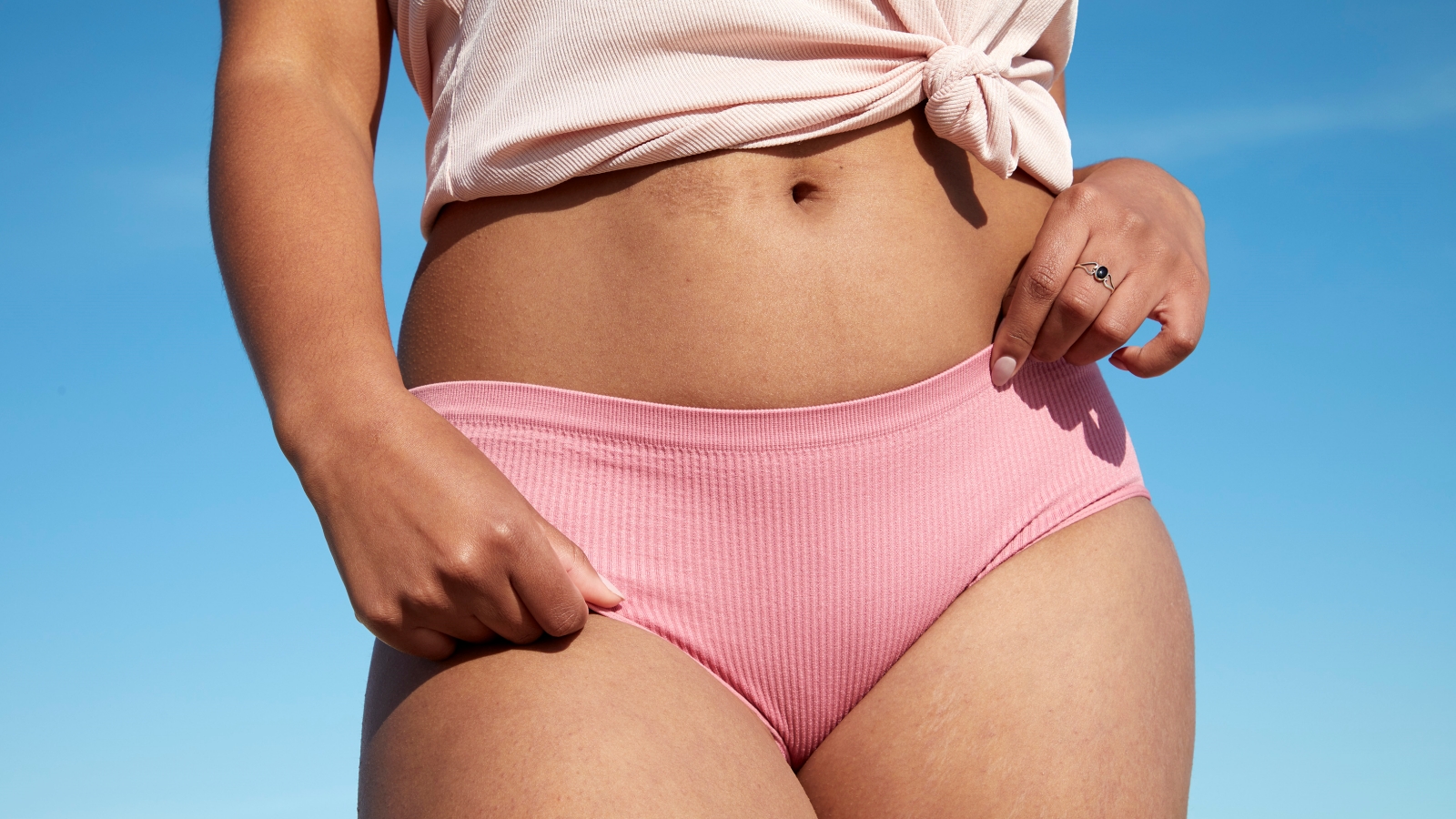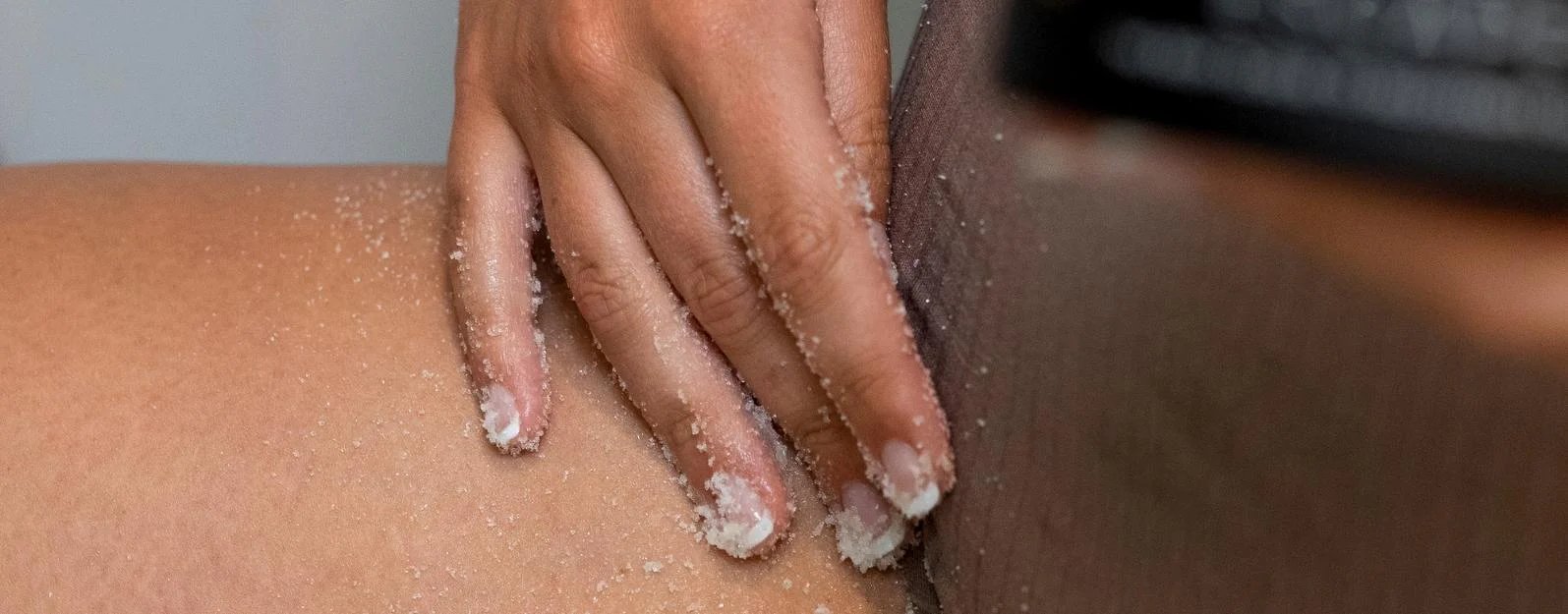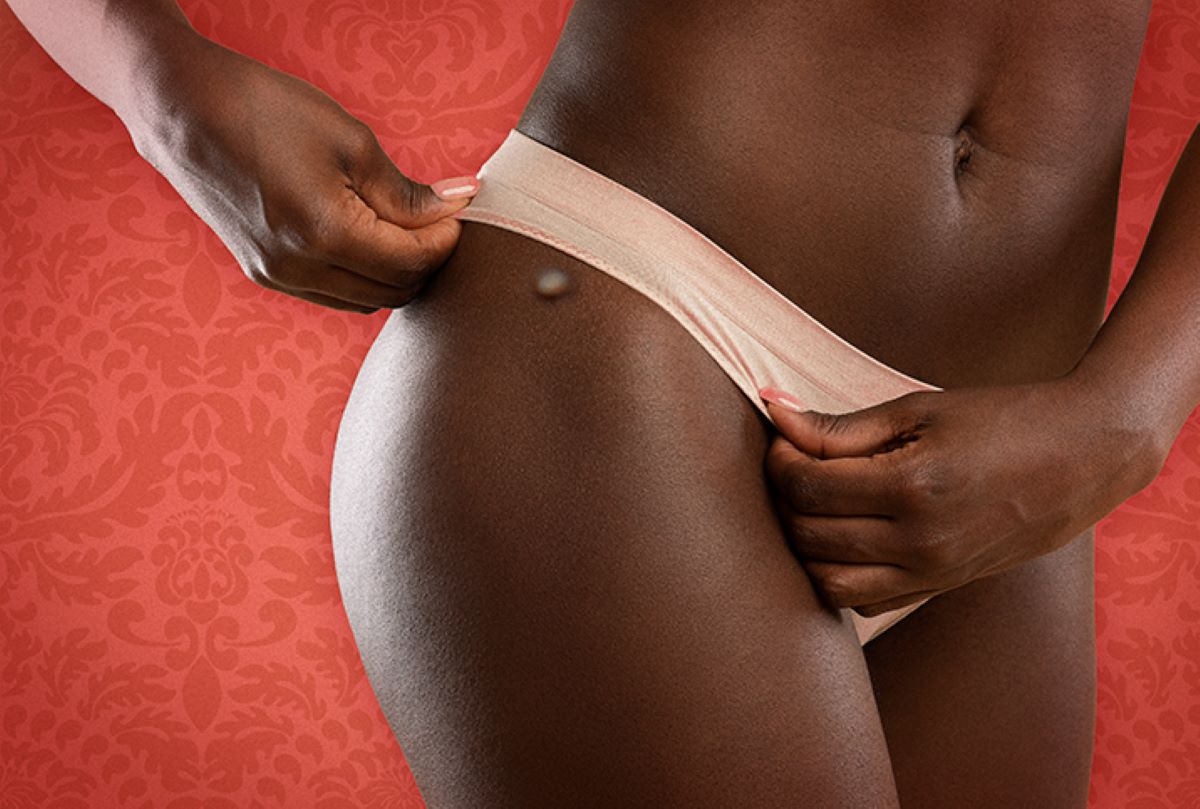Home>Women's Underwear>Bikinis>Why Does My Bikini Line Itch So Bad


Bikinis
Why Does My Bikini Line Itch So Bad
Modified: September 23, 2023
Discover the reasons why your bikini line may be itching so bad and learn how to soothe the discomfort. Find relief from bikini line itch with expert tips and advice.
(Many of the links in this article redirect to a specific reviewed product. Your purchase of these products through affiliate links helps to generate commission for Under-tec.com, at no extra cost. Learn more)
Table of Contents
- Why Does My Bikini Line Itch So Bad
- Introduction
- Causes of Bikini Line Itch
- Shaving or Waxing
- Irritation from Clothing
- Sweating and Moisture
- Ingrown Hairs
- Allergic Reactions
- Infection or STDs
- Tips to Relieve Bikini Line Itch
- Proper Shaving or Waxing Technique
- Wearing Breathable Fabrics
- Keeping the Area Clean and Dry
- Exfoliating Regularly
- Using Soothing Creams or Ointments
- When to Seek Medical Attention
- Conclusion
Why Does My Bikini Line Itch So Bad
Having an itchy bikini line can be quite uncomfortable and frustrating. Whether it’s a mild annoyance or a persistent itch, it can disrupt your daily activities and confidence. Understanding the causes of this itchiness is essential in finding relief and preventing further irritation. There are several factors that can contribute to a bad bikini line itch. Let’s explore some of the common culprits:
1. Shaving or waxing: When you shave or wax the bikini area, the hair follicles can become irritated and inflamed. This can lead to itching, redness, and even ingrown hairs. The sharp razor blades or the chemicals in the waxing products can also cause irritation, especially if you have sensitive skin.
2. Irritation from clothing: Wearing tight-fitting underwear or garments made from synthetic fabrics can trap heat and moisture, creating a breeding ground for bacteria and yeast. This can result in itching and irritation of the bikini line area.
3. Sweating and moisture: Excessive sweating, especially in hot and humid weather, can contribute to itching in the bikini area. Sweat can mix with bacteria and dirt, leading to irritation and itchiness.
4. Ingrown hairs: Ingrown hairs occur when the hair shaft curls and grows back into the skin instead of rising up out of it. This can cause red bumps, inflammation, and itching in the bikini area.
5. Allergic reactions: Some people may have an allergic reaction to certain skincare products, detergents, or fabrics. This can cause itching, redness, and irritation of the bikini line.
6. Infection or STDs: In rare cases, an itchy bikini line may be a symptom of an infection or sexually transmitted disease (STD). If you experience persistent itching along with other symptoms like discharge, odor, or pain, it is important to consult a healthcare professional for proper diagnosis and treatment.
Understanding the underlying causes of your bikini line itch is crucial in finding the appropriate remedies. In the next section, we will discuss some tips to help relieve the itchiness and discomfort.
Introduction
Bikinis are a popular choice of swimwear, allowing us to soak up the sun and enjoy the beach in style. However, one frustrating downside that many bikini wearers experience is an intense itchiness in the bikini line area. This persistent itch can be uncomfortable, distracting, and even embarrassing. So, why does your bikini line itch so bad?
There are several factors that can contribute to the itchiness in the bikini line. From shaving or waxing to clothing irritation and sweat, there are various reasons why you may be experiencing this discomfort. Understanding the root cause of the itch can help you find relief and prevent further irritation.
In this article, we will explore the common causes of a bad bikini line itch and discuss ways to alleviate the discomfort. We will delve into the impact of shaving or waxing, the irritation caused by clothing choices, the effects of sweating and moisture, the occurrence of ingrown hairs, the possibility of allergic reactions, and the rare occurrence of infections or sexually transmitted diseases (STDs) in relation to bikini line itch.
Not only will we highlight the factors contributing to the itchiness, but we will also provide you with tips and remedies to relieve the itch and restore comfort to your bikini line. By adopting proper shaving or waxing techniques, wearing breathable fabrics, maintaining proper hygiene, exfoliating regularly, and using soothing creams or ointments, you can minimize or eliminate the discomfort caused by an itchy bikini line.
Remember, while occasional itchiness is common, persistent and severe itching accompanied by other symptoms may require medical attention. It’s essential to be aware of when to seek professional help and not ignore any signs that indicate a potential infection or STD.
So, if you’ve been wondering why your bikini line itches so bad, get ready to uncover the reasons behind it and discover effective ways to alleviate the itch. Let’s dive in and learn how to enjoy the sun and sand without the bothersome bikini line itch!
Causes of Bikini Line Itch
The bikini line is a sensitive area that can easily become irritated and itchy. Understanding the causes of a bad bikini line itch is essential in finding effective solutions to relieve the discomfort. Let’s explore some of the common culprits behind an itchy bikini line:
1. Shaving or waxing: One of the main causes of bikini line itchiness is shaving or waxing. When you remove hair from this area, the hair follicles can become irritated and inflamed, leading to itching. The use of dull razors or harsh shaving creams can worsen the irritation. Additionally, waxing can cause redness and sensitivity, resulting in itchiness.
2. Irritation from clothing: Wearing tight-fitting underwear or clothing made from synthetic fabrics can create friction and trap heat and moisture. This environment is ideal for the growth of bacteria and yeast, leading to itching and irritation of the bikini line. Opt for underwear made from breathable materials like cotton to reduce the risk of irritation.
3. Sweating and moisture: Excessive sweating, especially in hot and humid weather conditions, can contribute to an itchy bikini line. Sweat can mix with bacteria and dirt, leading to irritation and itchiness. It is important to keep the bikini area clean and dry by regularly changing out of sweaty clothes and using talcum powder to absorb moisture.
4. Ingrown hairs: Ingrown hairs occur when hair follicles curl and grow back into the skin instead of growing straight out. This can cause red bumps, inflammation, and intense itching in the bikini area. Ingrown hairs often result from improper shaving or waxing techniques. To prevent ingrown hairs, exfoliate the bikini area regularly and avoid shaving too closely.
5. Allergic reactions: Some individuals may have allergic reactions to certain skincare products, detergents, or fabrics. This can lead to redness, irritation, and itching in the bikini line. Pay attention to any new products or materials that come into contact with your skin and switch to hypoallergenic options if necessary.
6. Infection or STDs: While less common, an itchy bikini line can be a symptom of an infection or sexually transmitted disease (STD). Yeast infections, bacterial infections, or STDs such as herpes or pubic lice can cause persistent itching. If you experience intense or prolonged itchiness accompanied by other symptoms like discharge, odor, or sores, it is important to seek medical attention for proper diagnosis and treatment.
Remember, everyone’s body is unique, and what may cause an itchy bikini line for one person may not affect another in the same way. By understanding the potential causes of the itch, you can take appropriate steps to prevent and relieve the discomfort. In the next section, we will discuss some tips to help alleviate the itchiness and promote a healthier bikini line.
Shaving or Waxing
Shaving and waxing are popular methods for removing hair from the bikini area, but they can also be significant contributors to an itchy bikini line. When you shave, the sharp razor blades can cause micro-cuts and irritation to the delicate skin in this area. Similarly, waxing involves removing hair from the root, which can lead to redness, inflammation, and sensitivity.
One of the main factors that can cause itchiness after shaving or waxing is ingrown hairs. When hair regrows, sometimes it can get trapped beneath the skin instead of growing outwards, resulting in red bumps and irritation. These ingrown hairs can be itchy and, if left untreated, can become infected.
To minimize the risk of itchiness and ingrown hairs after shaving or waxing, it’s important to follow proper techniques. Firstly, make sure to use a clean and sharp razor to reduce the chances of irritation. Shave in the direction of hair growth, as shaving against the grain can lead to more irritation. Use a lubricating shaving cream or gel to provide a barrier between the razor and your skin, allowing for a smoother shave.
When it comes to waxing, it may be best to seek professional help from an experienced esthetician. They can ensure that the waxing is done correctly, minimizing the risk of irritation and ingrown hairs. If you choose to wax at home, be sure to follow the instructions carefully and avoid waxing over the same area multiple times, as this can increase the chances of skin irritation.
After shaving or waxing, it’s essential to take care of your bikini area to prevent further irritation. Avoid tight clothes or underwear that can rub against the freshly shaved or waxed skin. Opt for loose-fitting, breathable cotton underwear to allow proper airflow and minimize friction. Applying a gentle moisturizer or soothing cream can also help to calm the skin and reduce itching.
Remember to exfoliate the bikini area regularly, as this can help prevent ingrown hairs. Use a gentle exfoliating scrub or a soft brush to remove dead skin cells and encourage the hair to grow in the right direction. Additionally, avoid shaving or waxing if you have any existing cuts, irritations, or infections in the bikini area, as it can further exacerbate the itchiness and potentially lead to complications.
By taking the proper precautions and following the right techniques for shaving or waxing, you can minimize the itchiness and irritation associated with hair removal in the bikini area. However, if the itchiness persists or worsens, it may be necessary to seek the advice of a dermatologist or healthcare professional for further evaluation and treatment options.
Irritation from Clothing
The clothing we wear in the bikini area can have a significant impact on its overall health and comfort. Wearing tight-fitting underwear or clothing made from synthetic fabrics can lead to irritation and itchiness in the bikini line area. The combination of friction, heat, and moisture can create an ideal environment for bacteria and yeast to thrive, causing discomfort and itchiness.
Tight clothing, such as skinny jeans or leggings, can rub against the delicate skin in the bikini area, causing irritation. Synthetic fabrics like polyester or nylon can trap heat and moisture, which can further exacerbate the problem. These materials do not allow proper airflow, leading to increased sweating and the growth of bacteria or yeast.
To minimize irritation from clothing, it is recommended to opt for loose-fitting underwear made from breathable and natural fabrics like cotton. Cotton allows air circulation, absorbs moisture, and reduces friction against the skin, helping to keep the bikini area dry and comfortable. Avoid wearing underwear that is too tight or has rough seams, as these can aggravate the skin and cause itchiness.
In addition to choosing the right fabric and fit, it’s important to pay attention to the cleanliness of your clothing. Always wear clean underwear to prevent the accumulation of bacteria or yeast that can cause irritation and odor. Avoid using harsh detergents or fabric softeners, as they can leave residues that may irritate the sensitive skin in the bikini area. Opt for gentle, fragrance-free laundry products or consider rinsing your underwear with plain water after washing to ensure no irritants are left behind.
If you find yourself sweating excessively, especially during hot and humid weather, consider changing your clothes frequently. Sweating can lead to moisture build-up, creating a breeding ground for bacteria and yeast. By changing into fresh, dry clothes regularly, you can help minimize the risk of irritation and itchiness.
When heading to the beach or swimming pool, choose swimwear made from quick-drying and breathable materials. Avoid leaving wet swimwear on for extended periods, as the prolonged moisture can lead to irritation. Always change out of wet swimwear as soon as possible and pat the bikini area dry before putting on fresh clothes.
By selecting comfortable and breathable clothing, practicing good hygiene, and paying attention to your clothing choices, you can reduce irritation and itching in the bikini line area. However, if the itchiness persists or worsens, it is advisable to consult a dermatologist or healthcare professional for further evaluation and guidance.
Sweating and Moisture
Sweating is a natural process that helps regulate body temperature, but excessive sweating in the bikini area can lead to discomfort and itchiness. When sweat accumulates in this area, it creates a moist environment that can promote the growth of bacteria and yeast, causing irritation and itchiness.
Hot and humid weather conditions can increase the likelihood of excessive sweating in the bikini area. The trapped moisture can lead to a range of issues, including redness, inflammation, and itchiness. Additionally, activities that increase body temperature, such as working out or spending time in saunas, can also contribute to sweat-related discomfort in the bikini line area.
To minimize sweating and moisture in the bikini area, there are several steps you can take. Firstly, opt for loose-fitting, breathable cotton underwear that allows air circulation, reduces friction, and absorbs moisture. Avoid tight synthetic fabrics that trap heat and moisture, as they can exacerbate the problem.
Keeping the bikini area clean and dry is crucial in preventing sweat-related itchiness. After exercising or engaging in activities that cause sweating, immediately change out of wet clothes and gently pat the bikini area dry with a soft towel. Avoid rubbing, as it can irritate the skin further.
If you’re prone to excessive sweating, you can use talcum powder or cornstarch in the bikini area to help absorb moisture and reduce friction. Avoid using scented powders, as they may contain irritating ingredients. Instead, choose unscented options or products specifically formulated for sensitive skin.
Regularly exfoliating the bikini area can also help prevent sweat-related itchiness. By removing dead skin cells, you can unclog pores and reduce the chances of bacterial or fungal growth. However, it’s important to use gentle exfoliating products and techniques to avoid further irritation or damage to the skin.
In addition to these preventative measures, it’s essential to maintain good overall hygiene. Cleanse the bikini area with a mild, fragrance-free soap or cleanser and rinse thoroughly with warm water. Avoid using harsh soaps or cleansers that can strip the skin of its natural protective barrier, as this can lead to dryness and increased sensitivity.
Remember, it is normal to sweat in the bikini area, but excessive sweating can cause discomfort and itchiness. By adopting these measures to minimize sweating and moisture in the area, you can reduce the risk of irritation and maintain a more comfortable bikini line. However, if the itchiness persists or worsens, it’s advisable to consult a dermatologist or healthcare professional for further evaluation and guidance.
Ingrown Hairs
Ingrown hairs are a common cause of itchiness in the bikini area. They occur when hair follicles curl and grow back into the skin instead of growing straight out. This can lead to red bumps, inflammation, and intense itching in the bikini line. Ingrown hairs often result from improper shaving or waxing techniques, as well as certain hair types that are more prone to curling back into the skin.
When a hair becomes ingrown, it can cause irritation and blockage of the hair follicle, leading to inflammation and the formation of small, painful bumps. In addition to itchiness, these bumps can sometimes become infected, resulting in further discomfort and potential scarring.
To prevent ingrown hairs and the itchiness they cause, it’s important to follow proper hair removal techniques. When shaving the bikini area, use a clean, sharp razor and do not apply too much pressure. Shave in the direction of hair growth rather than against it, as this can help reduce the likelihood of ingrown hairs. Additionally, avoid shaving too closely to the skin’s surface, as it can increase the chances of hairs becoming trapped under the skin.
If waxing, consider seeking professional help from an experienced esthetician. They can ensure that the waxing is done properly, reducing the risk of ingrown hairs. If you prefer to wax at home, follow the instructions carefully and avoid going over the same area multiple times, as this can irritate the skin and increase the risk of ingrown hairs.
Regular exfoliation of the bikini area can also help prevent ingrown hairs. By removing dead skin cells, you can help unclog the hair follicles and promote proper hair growth. Use a gentle exfoliating scrub or a soft brush to exfoliate the area, but be careful not to overdo it, as excessive exfoliation can also irritate the skin.
Some individuals find that using products with ingredients like salicylic acid or glycolic acid can help prevent ingrown hairs. These ingredients help exfoliate the skin and prevent the buildup of dead skin cells, reducing the likelihood of hairs becoming trapped. However, be cautious of using these products if you have sensitive skin, as they may cause further irritation.
If you have an ingrown hair that is causing intense itching or becomes infected, it’s important not to pick or scratch at it. Instead, apply a warm compress to the area to help reduce inflammation and encourage the hair to surface. If the ingrown hair persists or becomes infected, consult a healthcare professional for further evaluation and treatment.
By following proper hair removal techniques, exfoliating regularly, and seeking professional help when needed, you can minimize the occurrence of ingrown hairs and reduce the associated itchiness. However, if the itchiness persists or worsens, it’s advisable to consult a dermatologist or healthcare professional for further evaluation and guidance.
Allergic Reactions
Allergic reactions can be another cause of itchiness in the bikini area. Some individuals may have sensitivities or allergies to certain skincare products, detergents, or fabrics, leading to redness, irritation, and itching in the bikini line. It’s important to be aware of any new products or materials that come into contact with your skin to identify potential allergens and avoid further irritation.
Skincare products such as soaps, lotions, or shaving creams may contain ingredients that can trigger an allergic reaction in some individuals. Fragrances, preservatives, and certain chemicals are common culprits. If you suspect that these products are causing your bikini line to itch, consider switching to hypoallergenic or fragrance-free alternatives.
In addition to skincare products, the detergent or fabric softener that you use to wash your underwear and clothes can also cause allergic reactions. Harsh chemicals or fragrances in these products can irritate the skin, leading to itchiness. It’s recommended to opt for gentle, fragrance-free laundry products and avoid using excessive amounts.
Certain fabrics, especially synthetic materials like polyester or nylon, can also trigger allergic reactions in some individuals. These fabrics may cause irritation and itchiness, especially if you have sensitive skin. Consider switching to underwear made from breathable, natural fabrics like cotton, as it is less likely to cause an allergic reaction.
If you suspect that you may be experiencing an allergic reaction in the bikini area, it’s important to discontinue using the product or wearing the material that is causing the symptoms. Applying a cold compress to the affected area can help soothe inflammation and reduce itching. Over-the-counter antihistamines or topical corticosteroids may also provide relief, but it’s best to consult a healthcare professional before using these medications.
If symptoms persist or worsen, it’s advisable to seek medical advice from a dermatologist or allergist. They can perform allergy testing to determine the specific allergen and provide appropriate guidance on how to manage and avoid future reactions.
Remember, everyone’s skin is different, and what may cause an allergic reaction for one person may not affect another. It’s crucial to be aware of any potential allergens and take necessary precautions to minimize the risk of allergic reactions in the bikini area. If the itchiness persists or worsens despite taking preventive measures, it’s important to consult a healthcare professional for further evaluation and guidance.
Infection or STDs
While less common, an itchy bikini line can be a symptom of an infection or sexually transmitted disease (STD). It’s important to be aware of the signs and symptoms associated with these conditions to seek appropriate medical attention and prevent further complications.
Infections such as yeast infections or bacterial vaginosis can cause itchiness in the bikini area. Yeast infections, caused by an overgrowth of Candida fungus, can result in itching, redness, and a thick, white discharge. Bacterial vaginosis, on the other hand, is characterized by a fishy odor, unusual discharge, and itching. These infections can occur due to an imbalance in the vaginal flora and can be easily treated with medications prescribed by a healthcare professional.
Sexually transmitted diseases (STDs) can also cause itchiness in the bikini area. Conditions such as herpes, pubic lice (crabs), or trichomoniasis can lead to itching, sores, or unusual discharge. It’s essential to practice safe sex and seek medical attention if you suspect you may have contracted an STD. Healthcare professionals can perform appropriate tests for diagnosis and provide treatment options accordingly.
If you experience persistent itching in the bikini area along with other symptoms such as discharge, odor, pain, or sores, it is crucial to consult a healthcare professional for proper evaluation and diagnosis. They can perform necessary tests to determine the underlying cause and provide appropriate treatment.
Maintaining good personal hygiene is important in preventing and managing infections in the bikini area. Cleanse the area gently with mild soap and warm water, and avoid using harsh cleansers or douches, as they can disrupt the natural balance of bacteria and increase the risk of infections. Always wear clean underwear made from breathable fabrics and change out of wet swimwear promptly to minimize the risk of bacterial or fungal growth.
To prevent the spread of STDs, it’s important to practice safe sex by using condoms or other barrier methods and getting regularly tested for sexually transmitted infections. Open and honest communication with sexual partners about sexual health and history is also essential.
Remember, while infections and STDs are less common causes of itchiness in the bikini area, it’s important to be aware of the symptoms and seek medical attention if necessary. Early detection and appropriate treatment are crucial in preventing further complications and maintaining overall health and well-being.
Tips to Relieve Bikini Line Itch
Dealing with a bad bikini line itch can be frustrating, but there are several remedies and practices that can help alleviate the discomfort. Here are some tips to relieve bikini line itch and promote a healthier bikini area:
1. Proper shaving or waxing technique: When shaving or waxing, follow proper techniques to minimize irritation and ingrown hairs. Use a sharp razor, shave in the direction of hair growth, and avoid pressing too hard. If waxing, consider seeking professional help or follow instructions carefully to reduce the risk of irritation and ingrown hairs.
2. Wearing breathable fabrics: Opt for underwear and clothing made from breathable fabrics like cotton to allow for air circulation and reduce moisture buildup. Avoid tight-fitting synthetic materials that can trap heat and sweat, leading to skin irritation and itching.
3. Keeping the area clean and dry: Proper hygiene is essential for a healthy bikini area. Cleanse the area gently with mild soap and warm water, and pat dry with a clean towel. Avoid rubbing, as it can further irritate the skin.
4. Exfoliating regularly: Regular exfoliation helps remove dead skin cells and prevents the buildup of dirt and bacteria that can contribute to itchiness. Use a gentle exfoliating scrub or a soft brush to exfoliate the bikini area, but be mindful not to overdo it to avoid irritation.
5. Using soothing creams or ointments: Apply a soothing cream or ointment specifically formulated for sensitive skin to calm itchiness and irritation. Look for ingredients like aloe vera, chamomile, or witch hazel, which have soothing properties.
6. Avoid scratching: Although it may be tempting, refrain from scratching the itch as it can further irritate the skin and potentially lead to infection. Instead, apply a cool compress or gently pat the area to relieve the itch.
Remember, prevention is key, so take steps to minimize potential irritations. Avoid using harsh soaps, detergents, or fragrances in the bikini area. Practice good personal hygiene, change out of wet swimwear promptly, and maintain proper ventilation and dryness in the area.
If the itchiness persists or worsens despite these remedies, it may be necessary to seek medical advice from a dermatologist or healthcare professional. They can evaluate your specific situation and provide appropriate guidance or medications to alleviate the itch and address any underlying conditions if present.
By incorporating these tips into your routine, you can find relief from the itchiness and discomfort in your bikini line, allowing you to enjoy all your favorite beach and pool activities with confidence and comfort.
Proper Shaving or Waxing Technique
When it comes to hair removal in the bikini area, using the proper technique is essential to minimize irritation and prevent ingrown hairs. Whether you prefer shaving or waxing, following the right steps can help alleviate itchiness and promote a smoother bikini line. Here are some tips for proper shaving or waxing technique:
1. Start with clean skin: Before shaving or waxing, cleanse the bikini area with a gentle, fragrance-free cleanser. This will help remove any dirt, oils, or bacteria that could lead to irritation or infection.
2. Use a sharp razor: When shaving, always use a clean and sharp razor. Dull blades can cause irritation and lead to more ingrown hairs. If using a disposable razor, replace it regularly to ensure optimal performance.
3. Shave in the direction of hair growth: Shave in the direction that the hair is growing, as shaving against the grain can increase the likelihood of ingrown hairs and irritation. Take your time and use short, gentle strokes to achieve a close shave without applying excessive pressure.
4. Rinse the blade frequently: Rinse the razor blade under running water after each stroke to remove any hair and shaving cream buildup. This will help prevent clogging and ensure a smoother shave.
5. Use a shaving cream or gel: Apply a generous amount of shaving cream or gel to the bikini area before shaving. This will provide a protective barrier between the razor and your skin, reducing friction and minimizing irritation.
6. Avoid repetitive strokes: Try to avoid going over the same area multiple times, as this can increase the risk of irritation. If you need to shave a particular area again, apply more shaving cream before doing so.
7. Moisturize after shaving: Once you have finished shaving, rinse the area with cool water to remove any remaining shaving cream. Pat the skin dry gently with a clean towel and apply a soothing moisturizer to hydrate and calm the skin. Look for moisturizers that are specifically formulated for sensitive skin or contain ingredients like aloe vera or chamomile.
If you prefer waxing, consider seeking the services of a professional esthetician who specializes in bikini waxing. They are trained to perform the procedure correctly, minimizing the risk of irritation and ingrown hairs. If you choose to wax at home, follow the instructions carefully and avoid waxing over the same area multiple times, as this can lead to skin irritation.
It’s important to note that both shaving and waxing can cause mild redness and sensitivity in the bikini area. However, if you experience intense or prolonged itchiness, pain, or signs of infection after hair removal, it’s best to consult a healthcare professional for proper evaluation and treatment.
By following these proper shaving or waxing techniques and taking care of your bikini area afterward, you can decrease the likelihood of irritation, ingrown hairs, and the accompanying itchiness. Experiment with different methods and products to find what works best for your skin, and always prioritize gentle care to keep your bikini line looking and feeling its best.
Wearing Breathable Fabrics
The choice of underwear and clothing fabrics can play a significant role in maintaining a comfortable and itch-free bikini line. Opting for breathable fabrics is essential to promote proper airflow, reduce moisture buildup, and prevent irritation. Here’s what you need to know about wearing breathable fabrics for a healthier bikini line:
1. Choose cotton underwear: When it comes to underwear, selecting the right fabric is crucial. Cotton is a popular choice because it allows for optimal breathability. This natural fabric absorbs moisture, wicks away sweat, and allows air to circulate freely, reducing the risk of irritation and itchiness. Look for underwear made from 100% cotton or with a cotton-lined gusset for maximum comfort.
2. Avoid synthetic fabrics: Synthetic materials like polyester, nylon, or spandex can trap heat, restrict airflow, and contribute to sweat accumulation in the bikini area. These fabrics create a warm and moist environment that encourages the growth of bacteria and yeast, leading to discomfort and itchiness. If possible, avoid wearing underwear or clothing made solely of synthetic materials. If you prefer the stretch or support provided by synthetic fabrics, look for blends that incorporate a percentage of cotton for breathability.
3. Opt for loose-fitting styles: Tight-fitting underwear or clothing can create friction and impede airflow, increasing the likelihood of irritation and itchiness. Choose underwear and clothing styles that provide enough room for movement and allow the skin to breathe. Avoid excessively tight or restrictive styles, such as thongs or shapewear, as they can rub against the delicate skin and lead to discomfort.
4. Consider moisture-wicking fabrics: If you’re engaging in physical activities or spending time in hot and humid environments, consider using moisture-wicking fabrics for your underwear or clothing. Moisture-wicking fabrics have special properties that draw moisture away from the skin and onto the fabric’s surface, where it can evaporate more easily. Look for underwear or athletic wear labeled as “moisture-wicking” or “performance fabrics” to help keep your bikini line dry and comfortable.
5. Change out of wet clothes promptly: Whether it’s wet swimwear or sweaty workout attire, it’s important to change out of damp or wet clothes as soon as possible. Lingering moisture can create an environment conducive to bacterial or fungal growth, leading to itchiness and discomfort. Always have a fresh set of dry underwear or clothing to change into after swimming or exercising.
6. Launder with gentle products: Pay attention to the detergents and fabric softeners you use when washing your underwear and clothing. Harsh chemicals or strong fragrances can cause irritation and itchiness, particularly for those with sensitive skin. Opt for mild, fragrance-free laundry detergents and avoid using excessive amounts of fabric softeners or dryer sheets to minimize potential irritants.
By wearing breathable fabrics that allow air circulation, wick away moisture, and reduce friction, you can help prevent irritation and itchiness in the bikini area. Combined with good hygiene practices, such as regularly changing out of wet clothes, you’ll maintain a fresher and healthier bikini line. However, if the itchiness persists or worsens, it’s advisable to consult a dermatologist or healthcare professional for proper evaluation and guidance.
Keeping the Area Clean and Dry
Maintaining proper hygiene and keeping the bikini area clean and dry are essential for preventing itchiness and promoting overall comfort. Excessive moisture or the presence of bacteria can lead to irritation and cause an itchy bikini line. Here are some tips for keeping the area clean and dry:
1. Gentle cleansing: Wash the bikini area daily with a mild, fragrance-free cleanser. Harsh soaps or cleansers can strip away the natural oils and disrupt the delicate balance of the skin, leading to dryness and irritation. Use your hands or a soft cloth to cleanse the area gently, and avoid scrubbing vigorously.
2. Rinse thoroughly: After cleansing, ensure that you rinse the area thoroughly with warm water. Leftover soap residue can further irritate the skin and contribute to itchiness. Be gentle when rinsing to avoid additional friction that could potentially cause discomfort.
3. Pat dry with a clean towel: After washing, avoid rubbing the bikini area vigorously with a towel. Instead, pat the area dry gently to remove excess moisture. Rubbing can cause further irritation and contribute to friction-related discomfort. Ensure that the towel you use is clean to prevent any additional bacteria or irritants from coming into contact with the skin.
4. Avoid excessive moisture: Excessive moisture can create an ideal environment for bacterial or fungal growth in the bikini area, leading to itchiness and discomfort. After swimming or engaging in activities that cause sweating, change out of wet clothes promptly. If needed, use a clean towel to blot away any excess moisture in the area.
5. Consider talcum powder or cornstarch: Talcum powder or cornstarch can help absorb excess moisture and reduce friction in the bikini area. These powders help keep the area dry and prevent chafing. Choose fragrance-free powders to avoid potential irritation from added scents.
6. Avoid tight clothing: Tight-fitting clothing can trap heat and moisture, promoting sweat accumulation and increasing the risk of itchiness. Opt for loose-fitting underwear and breathable fabrics like cotton to allow for proper air circulation. Avoid wearing tight jeans or leggings for extended periods, especially in hot and humid weather.
7. Practice good hygiene during menstruation: During menstruation, be extra vigilant about keeping the bikini area clean and dry. Change sanitary pads or tampons frequently to prevent moisture buildup. Consider using unscented and hypoallergenic products to minimize potential irritants that could cause itching or discomfort.
By maintaining good hygiene practices and keeping the bikini area clean and dry, you can minimize the risk of irritation, itching, and discomfort. Remember to wear clean and breathable underwear, change out of wet clothes promptly, and avoid using harsh soaps or cleansers. If the itchiness persists or worsens despite these measures, it’s advisable to consult a dermatologist or healthcare professional for further evaluation and guidance.
Exfoliating Regularly
Regular exfoliation of the bikini area is an important step in maintaining a healthy and itch-free bikini line. Exfoliation helps remove dead skin cells, unclog pores, and prevent the buildup of dirt and bacteria that can contribute to itchiness and irritation. Here are some tips for exfoliating the bikini area effectively:
1. Choose the right exfoliating product: Select an exfoliating product that is gentle and suitable for the sensitive skin in the bikini area. Look for products specifically designed for body exfoliation, like a scrub or body wash with exfoliating particles. Avoid using harsh or abrasive scrubs, as they can cause further irritation.
2. Exfoliate after cleansing: To maximize the benefits of exfoliation, it’s best to exfoliate the bikini area after cleansing. This ensures that the area is clean and ready for exfoliation. Use warm water and a mild, fragrance-free cleanser to cleanse the area, then rinse thoroughly before proceeding with exfoliation.
3. Gentle exfoliation technique: Be gentle when exfoliating the bikini area. Using light pressure, massage the exfoliating product onto the skin in circular motions. Avoid applying excessive force or scrubbing vigorously, as this can irritate the skin and cause redness or discomfort. Let the exfoliating particles do the work.
4. Focus on the bikini line: Pay specific attention to the bikini line area when exfoliating, as this is where dead skin cells and trapped hairs are more likely to accumulate. Gently exfoliate the skin along the bikini line in a circular motion to help release any ingrown hairs and promote smoother skin.
5. Use a soft brush or exfoliating gloves: For a more thorough exfoliation, consider using a soft brush or exfoliating gloves. These tools can help remove dead skin cells and stimulate circulation in the bikini area. Remember to be gentle and avoid excessive pressure to prevent irritation.
6. Exfoliate once or twice a week: How often you should exfoliate the bikini area depends on your skin’s sensitivity and individual needs. Generally, exfoliating once or twice a week is sufficient. Overexfoliating can disrupt the skin’s natural barrier and lead to dryness or increased sensitivity. Listen to your skin and adjust the frequency accordingly.
7. Moisturize after exfoliation: After exfoliating, it’s important to moisturize the bikini area to replenish hydration and soothe the skin. Choose a gentle, fragrance-free moisturizer suitable for sensitive skin. Apply it immediately after exfoliation while the skin is still slightly damp to lock in moisture.
Remember, not all skin types may tolerate exfoliation well. If you have sensitive or easily irritated skin, it’s advisable to do a patch test before exfoliating the entire bikini area. If you experience any adverse reactions, such as increased redness or irritation, discontinue exfoliation and consult a dermatologist or healthcare professional for further advice.
By incorporating regular and gentle exfoliation into your skincare routine, you can help prevent the buildup of dead skin cells and maintain a smoother, healthier bikini line. However, if the itchiness persists or worsens after exfoliation, it’s advisable to consult a healthcare professional for proper evaluation and guidance.
Using Soothing Creams or Ointments
Soothing creams or ointments can provide relief from itchiness and help calm irritated skin in the bikini area. These products are designed to moisturize, soothe, and protect the skin, reducing discomfort and promoting healing. Here are some tips for using soothing creams or ointments effectively:
1. Look for gentle and hypoallergenic formulas: When choosing a soothing cream or ointment, opt for products specifically formulated for sensitive skin. Look for gentle and hypoallergenic options that are free from fragrances, dyes, and other potential irritants. These products are less likely to cause further irritation or allergic reactions.
2. Consider ingredients with soothing properties: Look for ingredients known for their soothing properties, such as aloe vera, chamomile, oatmeal extract, witch hazel, or panthenol (vitamin B5). These ingredients can help calm and moisturize the skin, reducing itchiness and inflammation.
3. Apply after cleansing: Cleanse the bikini area with a mild, fragrance-free cleanser and pat dry gently before applying the soothing cream or ointment. Applying the product to clean, dry skin allows for better absorption and effectiveness.
4. Use a thin layer: Apply a thin and even layer of the soothing cream or ointment to the affected areas of the bikini line. Avoid applying too much product, as this can lead to greasiness and may not enhance its effectiveness.
5. Gently massage into the skin: Use gentle circular motions to massage the product into the skin. This helps promote better absorption and even distribution. Be careful not to rub too vigorously, as this can further irritate the skin.
6. Reapply as needed: Depending on the severity of itchiness or irritation, you may need to reapply the soothing cream or ointment throughout the day. Follow the product instructions and reapply as needed for continued relief and protection.
7. Avoid potential irritants: While using soothing creams or ointments, it’s advisable to avoid potential irritants that can aggravate the skin. This includes harsh soaps, fragrances, and tight-fitting clothing that can create friction and trap moisture. Opt for gentle cleansers, fragrance-free products, and loose-fitting, breathable fabrics to reduce the risk of further irritation.
If you experience any adverse reactions, such as increased redness, rash, or itching, after applying a soothing cream or ointment, discontinue use and consult a healthcare professional for further advice.
It’s important to note that while soothing creams or ointments can provide temporary relief from itchiness and irritation, they may not address the underlying cause. If the itchiness persists or worsens despite using these products, it’s advisable to consult a dermatologist or healthcare professional for proper evaluation and guidance.
By using soothing creams or ointments and adopting other preventive measures, such as proper hygiene and wearing breathable fabrics, you can help alleviate itchiness and promote a healthier bikini line. These products can provide relief and improve comfort, allowing you to enjoy your activities with greater confidence and ease.
When to Seek Medical Attention
In most cases, itchiness in the bikini line can be relieved with proper care and preventive measures. However, there are certain situations where it is important to seek medical attention for further evaluation and treatment. Here are some indicators of when it’s time to consult a healthcare professional:
1. Persistent itching: If the itchiness in the bikini area persists or worsens despite home remedies and preventive measures, it may be a sign of an underlying issue that requires medical attention. Persistent itchiness may indicate an infection, allergic reaction, or skin condition that needs to be diagnosed and treated by a healthcare professional.
2. Intense or severe itching: If the itchiness is accompanied by intense discomfort, pain, or an unbearable urge to scratch, it is important to seek medical attention. This could be a sign of a more serious condition that requires professional evaluation.
3. Presence of other symptoms: If the itchiness is accompanied by additional symptoms such as redness, swelling, discharge, odor, sores, or a rash, it is advisable to consult a healthcare professional. These symptoms may indicate an infection, sexually transmitted disease, or an allergic reaction that require prompt attention and appropriate treatment.
4. Signs of infection: If there are signs of infection in the bikini area such as increased redness, warmth, tenderness, pus, or fever, it is crucial to seek immediate medical attention. These symptoms may indicate a bacterial or fungal infection that requires proper diagnosis and treatment.
5. New or changing moles or spots: If you notice any new or changing moles, spots, or growths in the bikini area, it is important to have them evaluated by a healthcare professional. These changes may indicate a potential skin condition or even skin cancer that needs to be properly assessed and managed.
6. History of skin conditions or allergies: If you have a history of skin conditions or known allergies, it is advisable to consult a healthcare professional for personalized advice. They can provide recommendations and treatment options that are tailored to your specific situation.
7. Concerns or uncertainty: If you are unsure about the cause of the itchiness or have concerns about your symptoms, it is always a good idea to seek medical advice. A healthcare professional can assess your situation, provide accurate diagnosis, and develop an appropriate treatment plan.
Remember, each person’s situation is unique, and it is important to trust your instincts. If you have any doubts or concerns about your health, it’s always better to seek guidance from a healthcare professional. They can provide the necessary expertise to properly diagnose and treat any underlying conditions causing the itchiness in your bikini line.
By seeking timely medical attention when needed, you can receive appropriate care and treatment, ensuring the health and well-being of your bikini line. Early intervention can prevent further complications and help you find the relief you need to enjoy life comfortably and confidently.
Conclusion
Itchiness in the bikini line can be a bothersome and uncomfortable experience. However, by understanding the causes and implementing appropriate remedies, you can find relief and maintain a healthy bikini area. Whether it’s adopting proper shaving or waxing techniques, wearing breathable fabrics, keeping the area clean and dry, exfoliating regularly, using soothing creams or ointments, or knowing when to seek medical attention, there are various strategies to alleviate itchiness and promote overall comfort.
Remember, everyone’s body is unique, and what works for one person may not work for another. It’s important to listen to your body, pay attention to any signs or symptoms, and adjust your care routine accordingly. If the itchiness persists or worsens despite preventive measures, it is advisable to consult a dermatologist or healthcare professional for proper evaluation and guidance.
Maintaining proper hygiene, wearing breathable fabrics, and practicing safe hair removal techniques are fundamental in preventing itchiness. Additionally, being aware of potential allergens and maintaining good overall health can contribute to a healthier bikini line.
By prioritizing self-care and seeking professional advice when necessary, you can find relief from itchiness and discomfort, allowing you to enjoy your favorite activities confidently and comfortably. Embrace these tips, be proactive in your bikini line care, and prioritize your well-being to ensure a healthy and itch-free bikini line.










